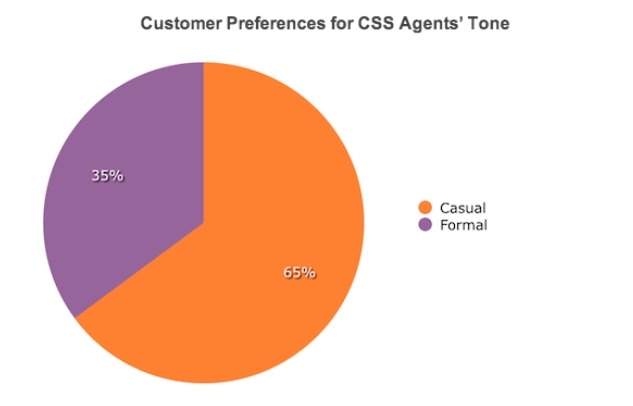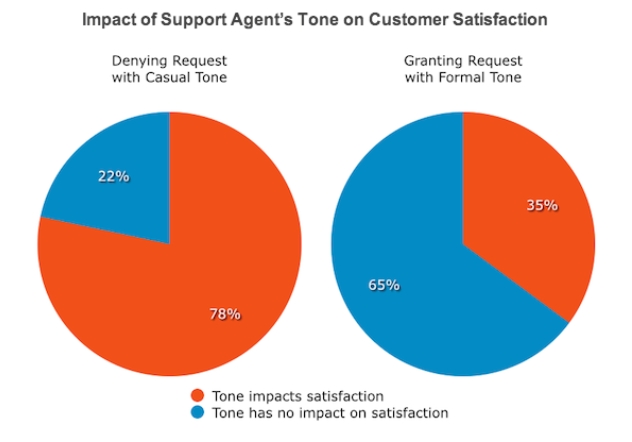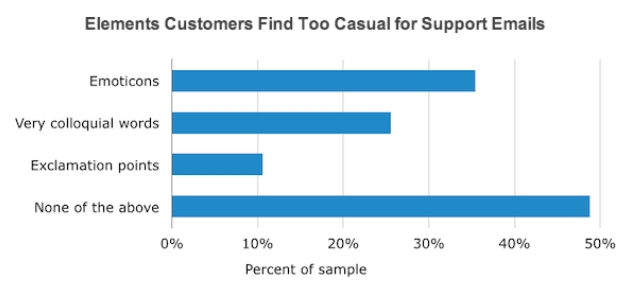💟Tone
Why is tone important?
In 1967, Albert Mehrabian came up with the “7%-38%-55%” rule determining that communication is made up of three parts:
The actual words you use (7%),
The tone of delivery in your voice (38%), and
The body language accompanying your words and voice (55%).
The PREACH Model
At Cal.com, when speaking to customers, we use the PREACH approach — we aim to be Proud, Responsible, Empathetic, Articulate, Concise and Human:
Proud – Our goal is to make the experience we solve better for our users. We own this goal and its impact unapologetically. For instance, we don’t say “Unfortunately we have a fee”, we say “We have a small service fee of X% that enables us to keep Cal.com up and running."
Responsible – If a bad feature or bug ships and a customer is disappointed or frustrated, it’s on us. We don’t blame the engineers (e.g. "Our engineering team messed up"), or attempt to come up with excuses. We take ownership of our mistakes, and move forward.
Empathetic – We acknowledge, and aim to truly understand how our customers feel and handle each conversation accordingly. We match their tone of voice, and the situation wherever we can.
Articulate – Gracefully augmenting your conversations with personal language, emojis (from time to time), and exclamation points is encouraged, but typos, bad punctuation, poor phrasing, or missing the point of their question make us look less professional. This might seem like an obvious one, but it’s important to keep the fundamentals front and center in order to reinforce our high bar.
Concise – No matter how much fun you can have with your customers, never forget they contacted you for a reason. Our job is to fully understand their needs and resolve them as quickly as possible. It's best to use bullet points and numbered lists when possible, and keep paragraphs at 2-4 sentences.
Human – We want customers to know they're talking to a human, even if you're using an automated response. For custom responses, take this opportunity to really connect with your customers, and if you wouldn’t say the words in a “normal” spoken interaction, don’t say them during a customer interaction.
Our Tone Guidelines
Talk to customers like you would in a "normal" spoken interaction.
Be a human when you're talking to the customers. Pretending that you're talking to your parent or grandparent is helpful to provide the right tone.
Be casual, as long as you're not giving bad news.
Emoticons: Typically okay to use for positive reinforcement with customers.
Colloquial words or "text talk": No lol or btw. We're more professional than that.
Exclamation points: Limit to 1 or 2 exclamation points per response. Only use when the overall gist of the response is very positive.
See the Zendesk study
In the first survey conducted by Software Advice, 65% of customers preferred their support staff to have a “casual” tone in the contents of their interactions.

Interestingly enough, the distribution was consistent across all age and gender demographics. No matter how young or old the customer was, they typically preferred a casual tone and style in writing.
Context matters
Although customers generally prefer a more human, friendly tone, each support interaction is different. A service staff must be able to assess the situation and any emotion at play, think about the right style of approach, and react appropriately.
For example, according to Jay Ivey, customers are likely to interpret a casual attitude in a delicate situation as being insensitive, condescending, or otherwise inappropriate. It just may not create the most productive mood.

An overwhelming majority of customers—78%—would be dissatisfied if their request was denied using a casual tone. In contrast, if a request was granted in a formal tone, only 35% said it affected their satisfaction.
Pro tip:
A support staff must be careful when dealing with those who are angry or upset. No need to learn the hard way here about the power of emotion: Those customers are, understandably, much more likely to be sensitive to the tone in the contents of the exchange. The best course of action is to keep the tone neutral and rely on other techniques to help defuse the situation and create a more productive mood. It's OK if your support interaction winds up on Twitter — as long as the story being told is a happy one.
Colloquialisms are sometimes inappropriate
Casual banter can sometimes go too far. Yes, it's a popular default style, and it can make everyone feel at ease, especially if the speaker or writer representing your company is naturally funny.
In the last decade emoticons [ ;P ], emoji, and colloquialisms [“lol”] have become commonplace in the contents of digital communication. They add some extra character to a sentence or a story, sure, sure, but is it something that every reader can appreciate?

Although 49% of customers didn’t consider any of the listed options as too casual, 35% felt that emoticons were too informal for support services. Similarly, 26% said the same about colloquial words.
Jay Ivey does offer a caveat here. Unlike support emails, live chat is inherently more casual. The back-and-forth style of chat makes it easier to remember there’s a real human being with some personality on the other end. Sometimes, liberally using emoticons or colloquialisms in the contents of the chat might actually be appropriate, just so long as agents are conscientious of the reader's needs on the other side.
Pro tip:
Read the situation. If the customer is using emoticons or colloquial language, feel free to respond in kind. Just don't go overboard and treat it like a bad Twitter post.
You are all characters in a story here: Staying alert to how the customer is feeling can help an agent with the right expression or word choice. A thoughtful approach to the content fueling these interactions can help ensure the message an agent communicates is well received.
Use first names.
Don't use titles, like
Mr.,Mrs.,Miss, orMa'amIf you're not sure what their name is, address them by saying
Hey thereorHi again(if they write back)
Always use a salutation.
Opening:
HeyorHiClosing:
Cheers,orThanks!
Thank them when appropriate, especially in the first response.
Providing feedback:
Thank you for reaching out to us.Don't use this for every one of their responses; otherwise it will seem too scripted.
Say "We're sorry" when needed.
If you're late to respond to a friend or if they're experiencing an issue, you would say you're sorry.
Bugs/issues:
We're so sorry you're experiencing this issue.
No grammar, spelling, or syntax issues.
Have Grammarly turned on in Chrome when you're working to prevent errors.
The Grammarly blog is a good resource.
Be positive.
That's a great question!
Start with the good, not the bad.
(e.g.
Try thisinstead ofWe can't help)
Use "we", not "I".
You're speaking on behalf of the company in every email you send.
Last updated
Was this helpful?